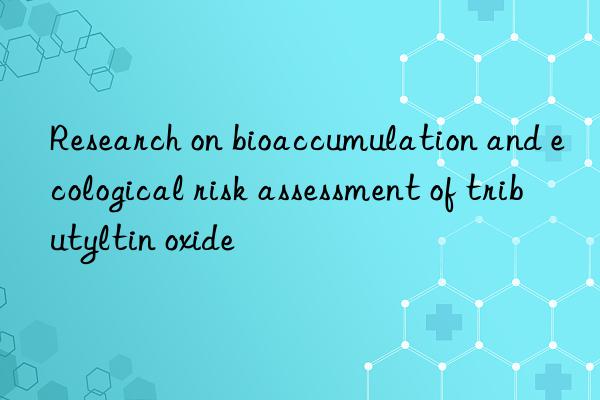
Introduction
Tributyltin oxide (TBT) is a commonly used organometallic compound that has attracted much attention due to its wide range of industrial applications. However, in recent years, studies have found that TBT has significant bioaccumulative and toxic effects on the environment, especially aquatic ecosystems, raising concerns about its ecological risks. This article will explore the bioaccumulation of TBT and its potential risks to ecosystems, and briefly discuss related risk assessment methods.
1. Basic characteristics of tributyltin oxide
Tributyltin oxide is a colorless or light yellow liquid with a chemical formula of C12H27SnO and a molecular weight of approximately 289.67 g/mol. TBT has been widely used in many fields due to its good solubility and chemical stability, such as coatings, plastic stabilizers, pesticides and antibacterial agents.
Bioaccumulation of di- and tributyltin oxide
Bioaccumulation refers to the degree to which a compound accumulates in living organisms, which is one of the important indicators for evaluating the environmental behavior of chemical substances. Because of its strong fat solubility, TBT is easily transmitted through the food chain and shows obvious bioaccumulation characteristics.
Fat solubility: TBT has strong fat solubility and is easily absorbed by the organism and accumulated through adipose tissue.
Bioaccumulation Factor (BAF): Research shows that TBT has a higher bioaccumulation factor in some species, meaning it can accumulate along the food chain.
Biomagnification effect: Due to the bioaccumulation of TBT, its concentration amplifies step by step in the food chain, posing a greater threat to top predators.
3. Ecotoxicity of tributyltin oxide
TBT has a strong toxic effect on aquatic organisms, especially at low concentrations, which can produce significant ecological effects.
Reproductive system effects: TBT has severe reproductive toxicity to shellfish and other marine organisms, which can lead to feminization of male shellfish and affect the reproductive capacity of the population.
Immune system suppression: TBT can suppress the immune systems of aquatic organisms, making them more susceptible to disease.
Nervous system damage: Exposure to high concentrations of TBT may also cause damage to the nervous system of aquatic organisms, affecting their behavior and survival ability.
4. Ecological risk assessment methods
To assess the impact of TBT on ecosystems, scientists use a range of assessment methods.
Environmental monitoring: Regularly monitor water bodies, sediments and biological samples to determine the presence level and distribution of TBT.
Laboratory testing: Use laboratory culture tests to evaluate the acute toxicity or chronic toxicity of different concentrations of TBT to aquatic organisms.
Model prediction: Use mathematical models to simulate the migration, transformation and accumulation process of TBT in the environment, and predict the scope of its impact on the ecosystem.
Risk assessment framework: Establish a comprehensive risk assessment framework by comprehensively considering factors such as TBT’s exposure pathways, toxic effects, and ecosystem sensitivity.
5. Management and Countermeasures
In view of the ecological risks of TBT, a number of international measures have been taken to limit its use and emissions.
Legislative restrictions: Many countries and regions have legislated to restrict or prohibit the use of TBT in antifouling paints and other products.
Alternatives Development: Research and development of safer alternatives that reduce the need for environmentally harmful substances.
Environmental remediation: Physical, chemical or biological methods are used for environmental remediation of polluted areas.
Public education: Strengthen the public’s understanding of harmful substances such as TBT and raise awareness of environmental protection.
6. Conclusion
As an important organometallic compound, tributyltin oxide plays an important role in industrial production, but its bioaccumulation and ecotoxicity also bring significant environmental problems. By conducting in-depth ecological risk assessment research and formulating reasonable management and protection measures, we can protect the ecological environment and achieve sustainable development while ensuring economic development.
Further reading:
Tetrachloroethylene Perchloroethylene CAS:127-18-4
Toyocat TE tertiary amine catalyst Tosoh
Toyocat RX5 catalyst trimethylhydroxyethyl ethylenediamine Tosoh

 微信扫一扫打赏
微信扫一扫打赏

